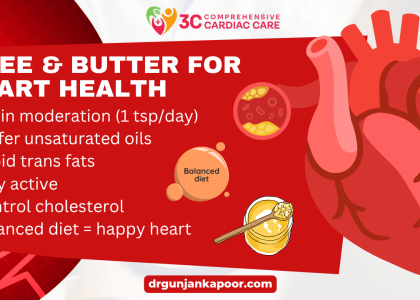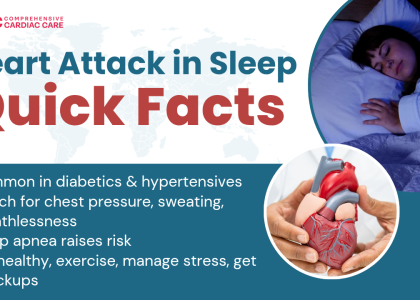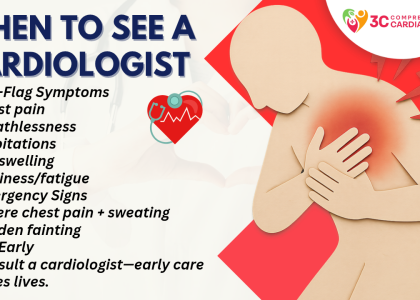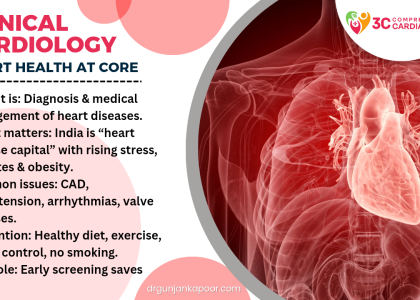When we think of a heart attack, we often imagine a man clutching his chest in pain. But did you know that heart attack symptoms in women can be very different—and often more subtle? This difference can lead to dangerous delays in getting treatment.
In this post, we’ll explore how heart attack symptoms in women differ from men, why it matters, and what every woman (and the people who love them) should know. ❤️
Why Knowing the Difference Matters
Heart disease is the #1 killer of women worldwide. Yet, women are less likely to recognize the signs of a heart attack and are more likely to delay seeking help. This delay can be fatal.
Understanding these unique symptoms can save lives.
Common Heart Attack Symptoms in Men vs. Women
| Symptom | Men ✅ | Women ✅/❌ |
|---|---|---|
| Chest pain/pressure | ✅ Common | ✅ Common but less intense |
| Shortness of breath | ✅ Sometimes | ✅ Very common |
| Nausea/vomiting | ❌ Less common | ✅ More common |
| Back/jaw pain | ❌ Rare | ✅ Common in women |
| Cold sweats | ✅ | ✅ |
| Fatigue (unusual tiredness) | ❌ Rare | ✅ Very common |
| Lightheadedness/dizziness | ❌ Less common | ✅ Often occurs |
Unique Symptoms in Women
While chest pain is still the most common symptom in both men and women, women are more likely to experience:
️ Extreme Fatigue
Feeling unusually tired—even after a good night’s sleep or minor physical activity—can be a red flag. Women may feel “wiped out” for days before a heart attack.
Jaw, Neck, or Upper Back Pain
Unlike the classic “crushing chest pain,” women may feel pain radiating to the jaw or back, which can be misdiagnosed as muscle strain or stress.
Nausea or Vomiting
These are often mistaken for food poisoning or the flu, but they can be signs of a heart attack, especially when paired with chest discomfort or sweating.
Shortness of Breath
Many women describe it as “can’t catch my breath” without doing anything strenuous.
️ Lightheadedness or Dizziness
Women may feel like they’re going to faint, especially during physical activity.
Why the Symptoms Differ
Women’s heart attacks often result from blockages in smaller arteries (microvascular disease), not the major ones. This can cause less obvious symptoms and make diagnosis harder.
Additionally, hormonal factors (especially estrogen) and stress-related heart conditions like Takotsubo cardiomyopathy (“broken heart syndrome”) are more common in women.
Women Are More Likely to Ignore Symptoms
Many women chalk up their symptoms to:
-
Stress
-
️ Indigestion
-
Being overworked
-
Anxiety
This delay in seeking help can be deadly. If symptoms last more than 5 minutes, call emergency services immediately.
✅ What to Do If You Suspect a Heart Attack
-
Call emergency services (911)
-
Chew an aspirin (unless allergic)
-
Stay calm and rest ️
-
Don’t drive yourself — wait for an ambulance ⚕️
Time = Muscle. The sooner you act, the better the outcome. ⏳
How to Protect Your Heart
Healthy Lifestyle Tips for Women:
-
Eat heart-healthy foods
-
Exercise regularly ♀️
-
Quit smoking
-
Control blood pressure & cholesterol
-
Manage stress
-
Know your family history
-
Get regular check-ups ⚕️
❤️ Listen to Your Body
Don’t ignore the whispers before the screams. Women’s symptoms are often subtle but significant.
Key Takeaways
✨ Women may not have “typical” heart attack symptoms.
✨ Unexplained fatigue, nausea, and back/jaw pain can be warning signs.
✨ Know the signs. Act fast. Save lives.









